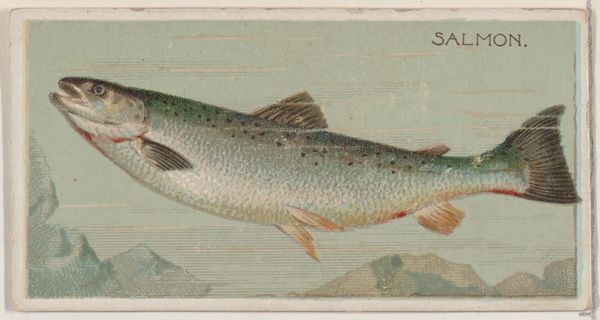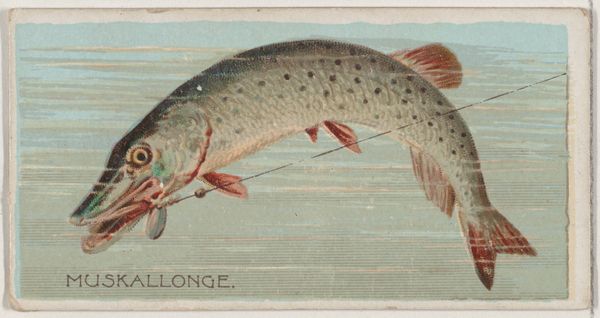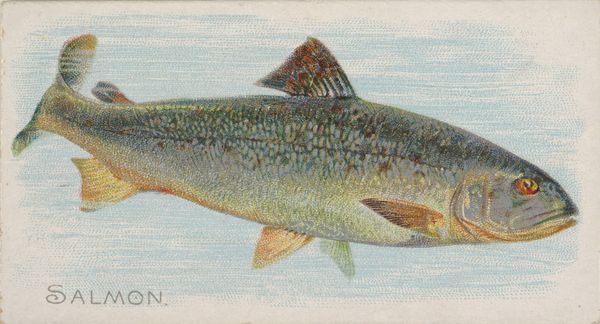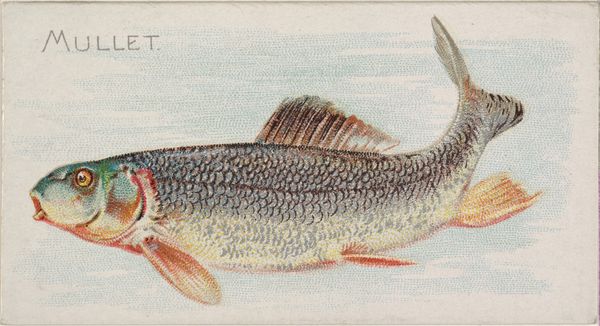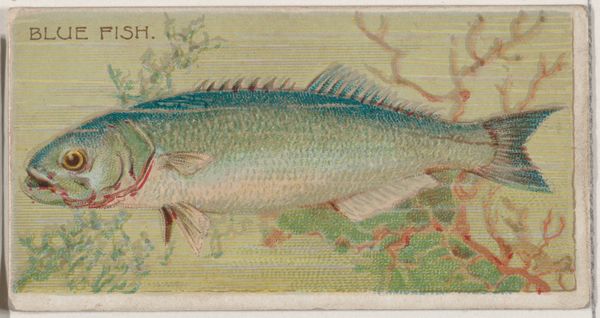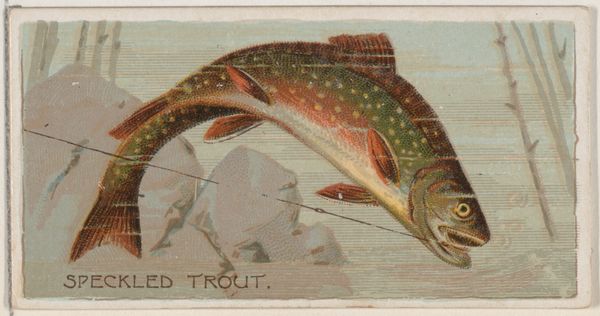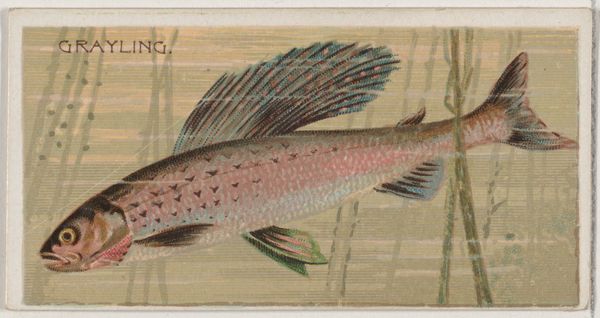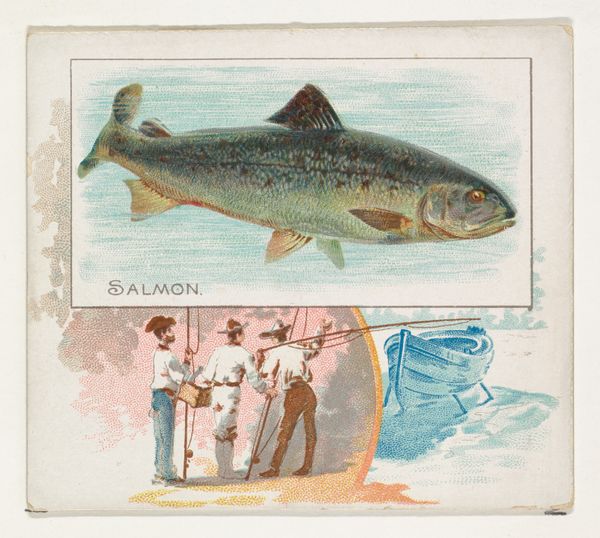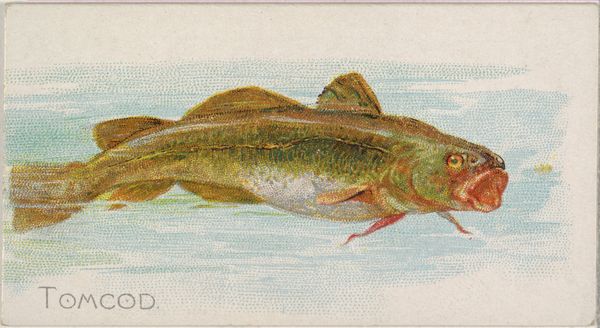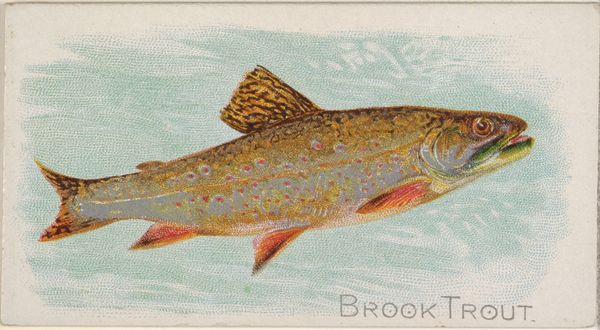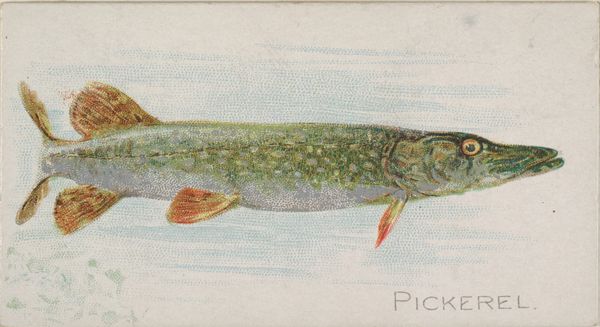
California Salmon, from the series Fishers and Fish (N74) for Duke brand cigarettes 1888
0:00
0:00
Dimensions: Sheet: 1 7/16 × 2 3/4 in. (3.6 × 7 cm)
Copyright: Public Domain
Editor: Here we have “California Salmon, from the series Fishers and Fish (N74) for Duke brand cigarettes," created around 1888 by Knapp & Company. It’s a print combining lithograph, colored pencil, and watercolor. The composition is very straightforward; it depicts the fish with remarkable detail. What stands out to you about this image? Curator: This is fascinating because it’s not just about representing the salmon, but embedding it within a specific economic and social structure. These were essentially promotional materials, included in cigarette packs. So, the means of production become paramount. Think about the labor involved: from the initial drawing to the lithographic printing process, the use of color, and the eventual mass distribution tied to tobacco consumption. Editor: So, you're saying the artistic merit is secondary to its function as advertising? Curator: Not secondary, but inextricably linked! The aesthetic appeal served a very deliberate function within the cycle of production and consumption. Consider the choices in material. Why lithography with watercolor and colored pencil, and what did that say about what the target audience of cigarettes wanted to consume as “art”? It collapses the supposed hierarchy between fine art and mass-produced ephemera. It also forces you to consider the material history – where was this printed? Who were the laborers? How was it distributed? Editor: I never thought about it like that, seeing it instead as just an advertisement and that these existed solely as collectible cards. Curator: Exactly! And considering the consumption aspect – a fleeting image tossed away after the cigarettes were gone. Is this a form of disposable art? The materiality of its existence dictates its meaning just as much as its aesthetic qualities do. Editor: That completely shifts my perspective. I am definitely leaving here thinking about materiality and labor! Curator: Absolutely! Thinking about art this way offers a much richer and nuanced understanding of this work beyond its surface.
Comments
No comments
Be the first to comment and join the conversation on the ultimate creative platform.
